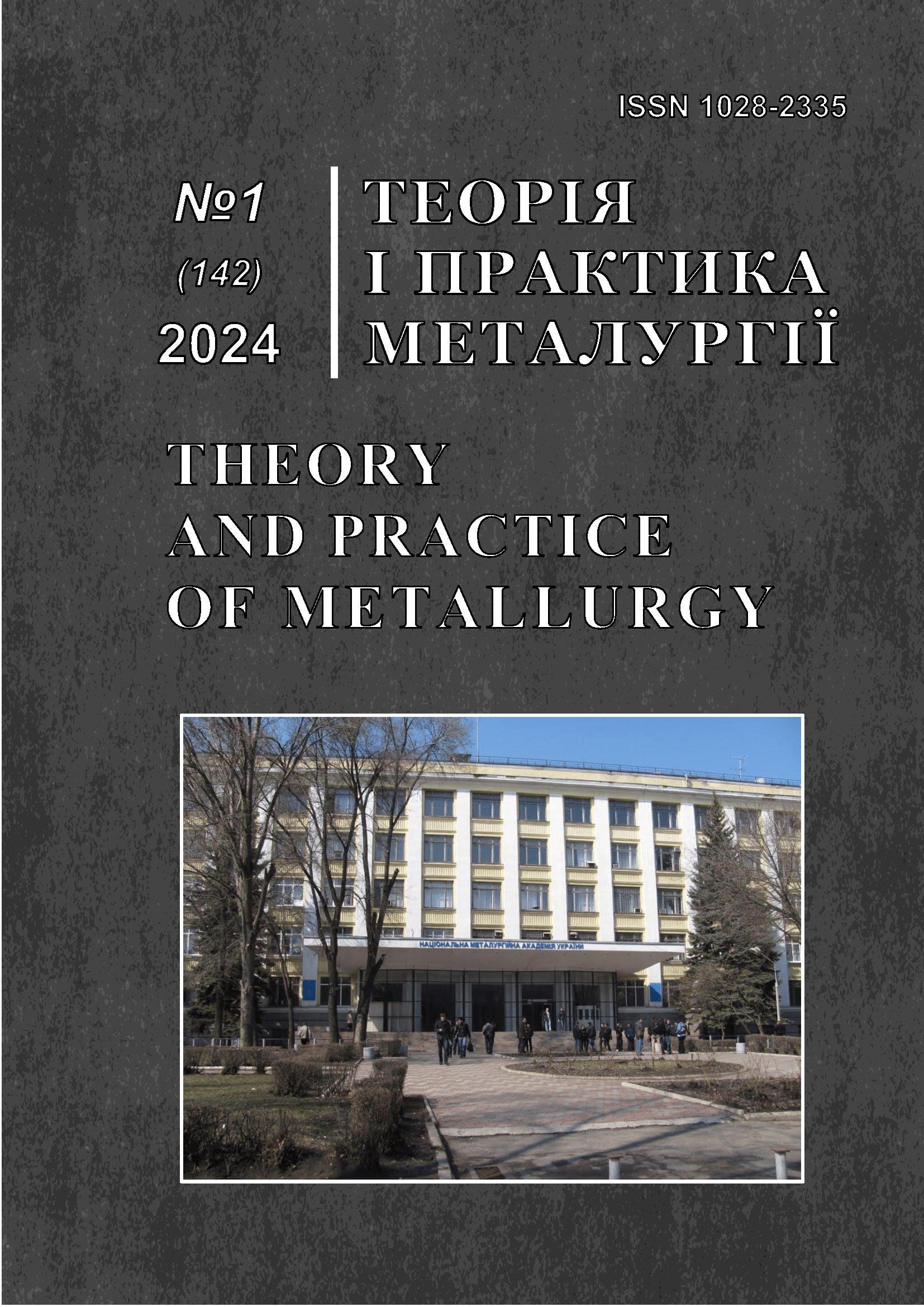Comparative analysis of the productivity and power of the crushing process by compression and shear loading in jaw crushers with simple and parallel-circular jaw movement
DOI:
https://doi.org/10.15802/tpm.1.2024.06Keywords:
jaw crusher, power, productivity, energy saving, kinematic diagram, disintegration, rock, load, crushing, compression, shearAbstract
Objective. To carry out a comparative analysis of the productivity and efficiency of the crushing process by compression and shear load in jaw crushers with simple and parallel-circular motion. Methods. A comparative analysis of the kinematic features of the movable jaw drive mechanisms for crushers with simple movement of the trajectory of the working surface points, with complex movement of the traditional design, and with parallel-circular movement of the jaw along its entire length was used to analyze the productivity and power of the process. Results. The paper analyzes the operation of the most common traditional kinematic schemes of jaw crushers with simple movement and complex jaw movement. A jaw crusher with a circular motion of the movable jaw along its entire length is considered in detail, which provides an increase in its productivity by increasing the cycle time for unloading the crushed material by almost a quarter. The power to overcome friction forces during the destruction of rock pieces was calculated. Calculations for various types of rocks have shown that a jaw crusher with a circular movement of the movable jaw along its entire length, due to shear load, theoretically requires significantly less (on average, 2 times) power to crush rock at all the same chamber dimensions and crushing conditions than a traditional jaw crusher with a simple jaw movement. Scientific innovation. A jaw crusher with circular motion of the movable jaw along its entire length, with rational productivity, theoretically requires significantly less (on average 1.76 times) power for crushing rock, taking into account friction costs, with all the same chamber dimensions and crushing conditions, than a traditional jaw crusher with simple jaw motion. Practical significance. The presented kinematic scheme of a crusher with a parallel-circular movement of the jaw along its entire length theoretically requires significantly less power and therefore will have a higher level of energy efficiency, which directly affects the economic performance of the crushing process. Energy efficiency and increased productivity can become key market competitiveness criteria.
References
Klushantsev, B. V., Kosarev A. I., & Muizemnek A. Yu. (1990). Crushers. Design, Calculation, Features of Operation. Mashinostroenie
Blokhin, V.S., Bolshakov, V.I., & Malich, N.G. (2006). Basic parameters of technological machines. Machines for disintegration of solid materials. Part 1. IMA-press
Bearman, R. T. (2019). Jaw and impact crushers. SME Mineral Processing and Extractive Metallurgy Handbook.
Korman, T., et al. (2015). Impact of physical and mechanical properties of rocks on energy consumption of jaw crusher. Physicochemical Problems of Mineral Processing. 51(2), 461-475
Valencia-Ochoa, G., et al. (2017). Energy saving in industrial process based on the equivalent production method to calculate energy performance indicators. Chemical Engineering Transactions, 57,709-714
Miura, N., & Sukeo, O. (1979). Particle-crushing of a decomposed granite soil under shear stresses. Soils and foundations, 19(3), 1-14
Beniak, J., Krizan, P., & Matús, M. (2015). Tools for material disintegration. Annals of the Faculty of Engineering Hunedoara, 13(1),133
Li, H. (2013). Discrete element method (DEM) modelling of rock flow and breakage within a cone crusher. [Dissertation, University of Nottingham]
Tselikov, A. I. (1987). Machines and aggregates of metallurgical plants. Vol. 1. Mashinostroenie
Maslennikov, V. A. (1996). Crushers destroying the material by compression. Izvestiya vuzov. Mining journal, 10-11, 124-138
Malich, M. G. (2022). Energy analysis of crushing ore materials by asymmetric loading. Theory and practice of metallurgy, (3), 38-44
Nikitin, A. G., Lyulenkov, V. I., Vitushkin, A. V., & Kalyukina, N. D. (2012). Comparative analysis of work of jaw crushers with different kinematic schemes. Izvestiya vuzov. Ferrous metallurgy, (10), 30-31
Shtepa, V. P. (2009). Theory. Experiment. Practice. Energy saving in machine production. IMA-press
Kosarev, A. I., & Ovcharenko, N. V. (1977). Energy losses in jaw crushers. Tr. VNIIstroydormash, 77, 21-25
Shtepa, V. P. (2010). Prediction of useful work and efficiency of the designed machine. Metallurgical and mining industry, (3), 115-118
Downloads
Published
How to Cite
Issue
Section
License
Copyright (c) 2024 Malich M.G., Katan V.O., Laikov D.V., Avramenko S.O.

This work is licensed under a Creative Commons Attribution 4.0 International License.
Authors retain copyright of the published papers and grant to the publisher the non-exclusive right to publish the article, to be cited as its original publisher in case of reuse, and to distribute it in all forms and media. Articles will be distributed under the Creative Commons Attribution 4.0 International (CC BY 4.0) licence.
Authors can enter the separate, additional contractual arrangements for non-exclusive distribution of the published paper (e.g., post it to an institutional repository or publish it in a book), with an acknowledgement of its initial publication in this journal.




